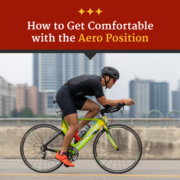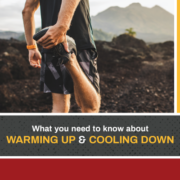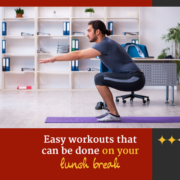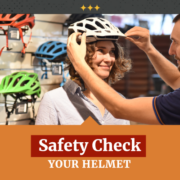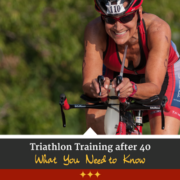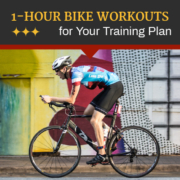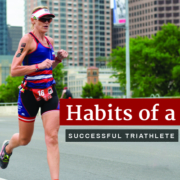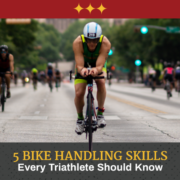How to Get Comfortable with the Aero Position
Take advantage of the benefits of riding your bike in the aero position
Triathletes are always looking for different ways to get faster. That could include increased training, improved nutrition/hydration, or better equipment. If you’ve ever seen a cyclist in a more hunched-over position not using their original handlebar, they’re in the aero position. Their arms are placed on the aero bar and they keep their body more parallel to the ground than a traditional cyclist. Riding in the aero position during training or your triathlon allows for increased power output while conserving energy.
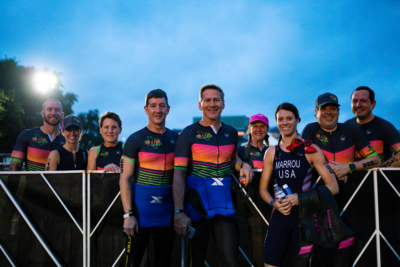
Ask your tri friends for aero position advice.
This doesn’t happen overnight. Like all training, you have to work at it. Getting more comfortable with the aero position over time will allow you to take advantage of its benefits. Below are a few tips that’ll help you adjust to this new position. Pro tip: continue to work on your everyday bike skills for continued growth.
Ask your tri friends
Before you dive into anything that involves change, ask your triathlon friends and club/group. Firsthand information will be instrumental in discovering what works best for you. Tips, advice, gear, and recommendations can get you going in the right direction. Using the aero position is a big switch to your current riding. All the information you can obtain is helpful.
But don’t stop at just asking questions. Watch what others do when in the aero position. See what products they use. Ask how much they had to adjust different components on their bike. Lastly, ask someone if you can give their bike a test ride to see if you even like the aero position. You can complete this ride on one of these cyclist-friendly courses in Austin or on a trainer.
Make incremental changes
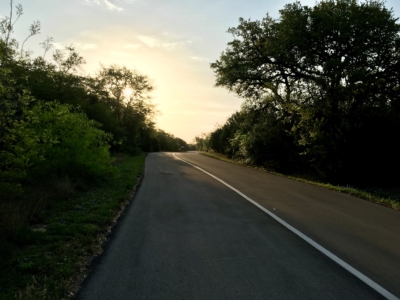
The Veloway is a cyclist-friendly place to ride in Austin.
To achieve an aero position that is best for you, you need to make changes to your riding posture. Do so with incremental changes. If you want to adjust your saddle height, make adjustments 1-2mm at a time until you find what’s comfortable for you.
Ride in the new position for a week or two, see if it’s comfortable, and make changes as needed. Eventually, you’ll become accustomed to the new posture. Making incremental changes helps prevent injuries and allows you to find the new saddle height that’s right for you.
Check fit of elbow cups
Elbow cups, scoops, armrests, whatever the name, this is where you place your arms when in the aero position. Comfort is important since your elbows and forearms will be on the aero bars for the majority of the time. If you find your current set is lackluster, get something better. Also, you can put extra padding on the elbow cups for better support. As with the saddle height incremental changes, make armrest adjustments until you find the position that works for you.
Practice the new aero position
Just like anything related to triathlon training, you have to practice! Once you find the aero position that best fits you, practice in it as often as you can to become increasingly comfortable. Even if you’re still making adjustments keep practicing so you can diagnose the needed changes. Practice with these 1-hour bike workouts until you get more comfortable.
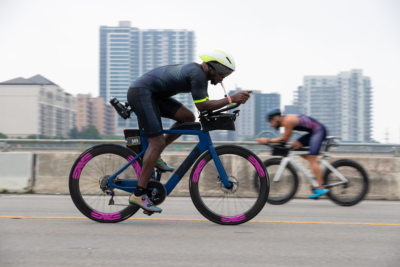
The aero position can help increase speed and conserve energy. Credit – Scott Flathouse
Incremental change includes time spent in aero. Spend some time there, then return to your regular handlebar. Once you become more comfortable, increase the duration of holding the aero position. Then ride in this position on turns, when you need to pass, or with a large group. With continued practice, you’ll take advantage of the benefits of the aero position in no time.
Work on your core/upper body strength, and flexibility
Your core and upper body strength are essential to the aero position. Building strength helps prevent fatigue, allowing you to push harder and longer. Improving the flexibility of your lower back helps you get in a better and more comfortable position. Add these 5 core exercises to build your strength. You can do them anywhere!
Fine-tuning your aero position for maximum comfort will help you get optimal results. With continued practice, you’ll find the right position and increase your speed. Just like any other aspect of your training plan, this will not happen instantly. You’ll have to constantly work at this is order to find what works best for you.

